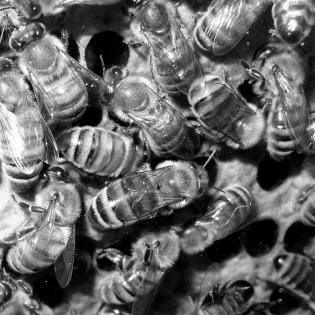BEE a Part of Our Community
Sometimes we let negative words of others or our own doubts stop us from doing what we know we can. Children reflect on the importance of positive words and actions to make a strong community.
The learner will:
- create a "community web" with respectful, positive, uplifting comments.
- read-aloud copy of Buzzy the Bumblebee by Denise Brennan-Nelson
- ball of yarn
- a poster of desirable community "BEE-haviors:" BEE honest, BEE friendly, BEE respectful, BEE responsible, BEE caring, BEE helpful. Decorate the poster with bees and flowers (similar to style in the book Buzzy the Bumblebee). Leave room for the children to add their ideas in the activity.
Read about the service-learning project called Morris Community Sensory Path by Morris Grade School students who learned from this BEE a Part of Our Community lesson. “Students liked being kind and giving back to others. By teaching students service and giving, hopefully will help make the world a better place.”
Brennan-Nelson, Denise. Buzzy the Bumblebee. Chelsea, MI: Sleeping Bear Press, 2003. ISBN: 1886947821
Instructions
Anticipatory Set:
Read aloud the book Buzzy the Bumblebee by Denise Brennan-Nelson. Discuss how Buzzy felt and acted when he read that he couldn’t fly. Ask, "Do you ever believe things you hear even if it goes against what you know?" What helped him overcome that attitude? (kind words)
Say, "Can we help others who are hurt by buzz talk?" Brainstorm things they can say and do to make a good community (that do not require permission of an adult). Write their ideas on a poster board (invite a new friend to play, share a pencil, let someone go ahead of you in line). They may be added to the Bee-havior poster made in advance.
Have the children sit in a circle. Give one child the end of a ball of yarn. They hold it tightly and pass the ball of yarn back and forth across and around a circle until each member of the circle is holding a piece of the yarn. As they pass the yarn on to someone, they say something kind, helpful, encouraging, caring or respectful to that person, getting ideas from the "bee-haviors" discussed above. When each person is holding a piece of the yarn, they will have a strong web linking them together into a community.
While building community with positive comments, children see reasons to "BEE-lieve" in themselves and each other. Once the "web" is built, discuss the strength of the community "web" with some of the following questions:
- How did you feel when you were encouraged?
- How do positive BEE-haviors make a community better?
- How did you feel when you helped the community?
- When someone is kind to you, do you want to pass that kindness on to others?
Ask, "What would happen to the community if someone said a negative comment?"
Tell the children you are going to pretend someone just told you that you were too slow to be on the soccer team. Hang your head and drop your yarn.
When you drop your yarn, others will feel the yarn go slack. Tell them to drop their piece of yarn if their yarn feels less tight. As some drop the yarn, others will feel the weakness in the web. Tell them to continue dropping in turn until the web is lying on the ground in front of the class.
Reflect on how a community is weakened by negative comments, just like the one hurtful comment affected everyone touching the yarn. Just as kind words encourage people to be kind to others, unkindness is passed around and breaks community bonds of support.
Summarize the lesson by stating that a strong community is built on positive BEE-haviors passed around and around. For more sophisticated learners, you may introduce the concept of community capital: when you invest positive behaviors into the community, others are likely to pay them back with further kindnesses.
Philanthropy Framework
-
Strand PHIL.I Definitions of Philanthropy
-
Standard DP 01. Define Philanthropy
-
Benchmark E.1 Define philanthropy as the giving and sharing of time, talent, or treasure intended for the common good.
-
-
Standard DP 02. Roles of Government, Business, and Philanthropy
-
Benchmark E.3 Identify ways that trust is important in all communities.
-
Benchmark E.6 Explain why acting philanthropically is good for the community, state, nation, or world.
-
-
-
Strand PHIL.II Philanthropy and Civil Society
-
Standard PCS 01. Self, citizenship, and society
-
Benchmark E.3 Describe a benefit of group cooperation.
-
-
Standard PCS 02. Diverse Cultures
-
Benchmark E.3 Identify the similarities in philanthropic behavior among people of different cultural backgrounds.
-
-
Standard PCS 05. Philanthropy and Government
-
Benchmark E.13 Offer examples of community/social capital in school.
-
-
